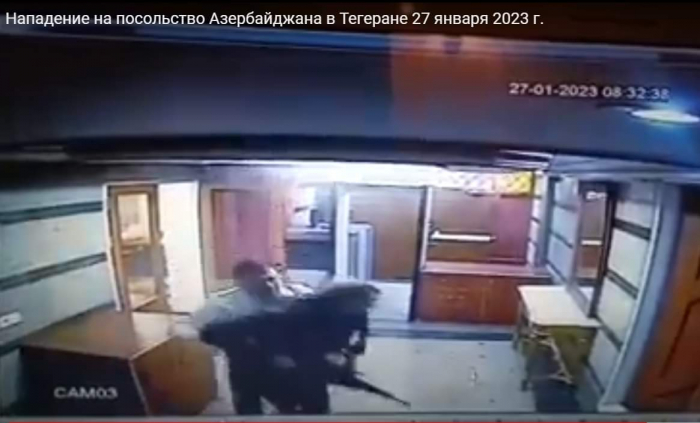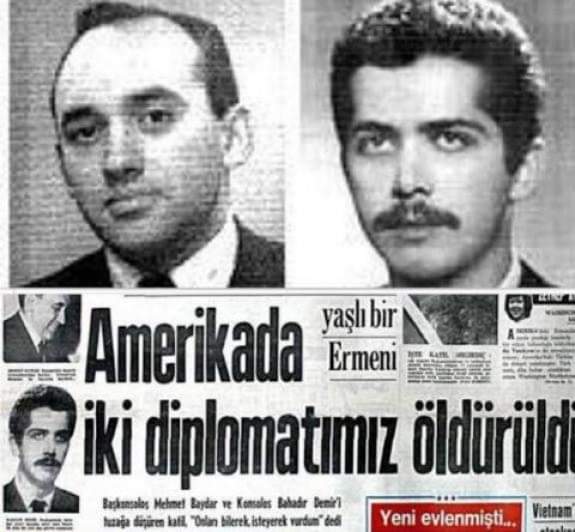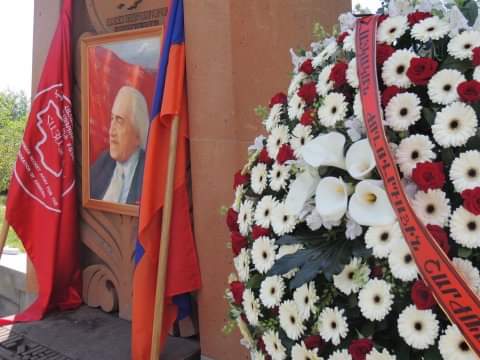ANALYTICS
27.01.23 15:50

An armed attack on the Azerbaijani embassy in Tehran took place on the morning of 27 January at around 8:30 am in Iran! An Azerbaijani security official responsible for protecting the embassy was killed in the attack and two other embassy personnel were wounded.
"The attacker destroyed the guard post with a Kalashnikov assault rifle and killed the head of security. Two embassy guards were also wounded while trying to prevent the attack. Their condition is satisfactory," the Azerbaijani Foreign Ministry said in a statement.
The question almost immediately arose as to who was behind the attack on the embassy. If we make an excursion into the history, Iran has a rich tradition of attacks on foreign embassies. The most resonant one was in the last century - capture of the USA embassy on November 4, 1979 after so-called Islamic revolution in Iran. Then the American embassy and 66 diplomats working there were seized by an anti-American mob. And contrary to all international norms, the new Iranian government supported their capture. An attempt to free U.S. diplomats by armed special operation failed and the hostages were not released until 20 January 1981 as a result of negotiations.
One can also recall the attacks on the Saudi embassy and consulate in Tehran and Mashhad in 2016, and if we go deeper into history, in the 19th century the attack on the Russian embassy in Tehran and the murder of Ambassador Griboyedov on January 30 (February 11), 1829 (the latter case did not do without the provocative role of the Armenian renegade) went down in history. All these attacks have one thing in common - in fact, Iranian authorities and Iranian special services were directly or indirectly behind them.
Based on the most recent information, as well as on the behavior of the Iranian side and the first pieces of Iranian propaganda, Iranian special services were directly behind the terrorist attack on the Azerbaijani Embassy in Iran. In this case, firstly, the Iranian side, trying to cover its tracks and create a distracting information noise, makes jokes about the alleged "Armenian trace. The next version Iranian propaganda stakes on is that Iranian Yasin Huseynzadeh allegedly came with his two children to "free his wife", who was allegedly being held on embassy premises for some reason. This is also, in fact, an attempt to portray an attack planned by the Iranian security services as a "domestic incident". Moreover, the Tehran police chief gave false information that the Iranian police allegedly apprehended the culprit. The video of the terrorist attack from the scene shows no children, no Iranian police:
The version about the "Armenian trace" also appeared not at all accidentally. After all, the Iranian special services in quantity and bloodiness of attacks on foreign embassies "compete" with their "friends and allies" the Armenian terrorists for whom Turkish embassies and diplomatic missions (mostly Turkish) were the main targets of resonant crimes.
Most interestingly, the attack on the Azerbaijani Embassy in Tehran was carried out exactly 50 years after two Turkish diplomats were killed by an Armenian terrorist in the United States.
On January 27, 1973, 77-year-old Gurgen Yanikyan contacted the Turkish consulate in Santa Barbara, California, under the name of Iranian (!) Yani-Khan (here helped by his excellent knowledge of Persian language and Iranian traditions), who was ready to present Turkey a unique note with the signatures of famous people and an Italian painting once hung in the bedroom of Sultan Abdul-Hamid. The gifts he was allegedly prepared to give in exchange for a Turkish decoration. Yanikyan invited the Turkish Consul General in Los Angeles, Mehmet Baydur, 49, and Vice Consul Bahadur Demir, 31, to the Baltimore Hotel in Santa Barbara. In the room, Yanikyan pulled out a Luger pistol and discharged it at the diplomats, then fired two test shots.

At the trial, Yanikyan justified his crime as "revenge" for the mythical "Armenian genocide" and did not hide the fact that the crime was committed out of hatred. He stated bluntly: "I did not kill two people, I destroyed two evils. They were not human beings to me".
In July 1973 Janikian was sentenced to life imprisonment. But in 1984, despite Turkish protests, he was released from prison "due to ill health" and died less than a month later. In 2019, under Nikol Pashinian's new government, the remains of terrorist Gurgen Yanikyan were moved to Yerevan and reburied in the Yerablur military cemetery.

Most interestingly, 2 years ago, on 27 January 2021, an image of "Armenian martyr" Gurgen Yanikyan was provocatively displayed on the building of the Azerbaijani embassy in Iran by unknown assailants. And exactly 2 years later, on the same day January 27, 2021 the Azerbaijani embassy was attacked.
That is, those who organised the attack were well aware of "whom they would immediately think of". Of course, the involvement of Armenian nationalists in the current terrorist act in Tehran cannot be denied, but it was at a much higher level than that of individual terrorists like Yanikyan. Most likely, it was the Iranian special services that organised the terrorist act in connection with the "Armenian order" and in the light of the geopolitical rapprochement between Yerevan and Tehran.
And the terrorist act in Tehran was directed not only against Azerbaijan, but also against Turkey. It is no coincidence that immediately after the terrorist attack in Tehran, Turkish Foreign Minister Mevlut Cavusoglu called Ceyhun Bayramov to offer his condolences and to assure him that Turkey is by Azerbaijan's side.
In connection with the high-profile terrorist attack and the obvious "Armenian trace" in its perpetration, it is impossible not to mention that cooperation between Iran and Armenian nationalists has a long history and is now entering a new phase. Moreover, it is acquiring a "life and death" issue for Armenia. For it is precisely today that Armenia is betraying its former ally Russia, becoming increasingly oriented towards France, which nevertheless does not intend to fight for Armenian interests, limiting itself to "verbal", financial, and political support. In this transitional moment, Armenia is most interested in cooperation with Iran as "the only pillar" in the region, both militarily and in the sphere of "shadow special operations".
The current attack on the Azerbaijani embassy in Tehran also raises many questions, because it did not take place at the calmest moment in the Iran-Azerbaijan relations. The Islamic Republic of Iran, despite its rhetoric of "defending Muslims" has lately been supporting both the regime in Yerevan and the Armenian "Artsakh" separatists, so far entrenched under the protection of Russian peacekeepers in Karabakh. And given that Russia is forced to redeploy all its combat-ready troops "to the Ukrainian front", it is Iran that becomes the only "unconditional protector" of Armenian interests in the region, which can send its armed forces for this purpose. Even Russia is forced to "observe decorum" in the same issue of the Lachin road and does not go (temporarily) on the Armenian extremists. However, no one knows how Iran will behave if the Armenian side manages to drag it into a conflict with Azerbaijan. The attack on the embassy could be a deliberate provocation to stir up such a conflict.
Another interesting point! While Pashinian's clearly anti-Russian regime in Yerevan and the pro-Russian "Artsakh" separatists from the Karabakh clan, along with Ruben Vardanyan, who landed in Khankendi from Moscow, are political opponents, they have a touching unanimity regarding cooperation with Tehran. Nikol Pashinyan recently sent his wife Anna Hakobyan to the so-called "first international congress of influential women" in Iran. And for the "Artsakh" separatists Iran is generally becoming their "last hope" in the light of Russia's weakening position.
Varden Tsulukidze
Read: 775
Write comment
(In their comments, readers should avoid expressing religious, racial and national discrimination, not use offensive and derogatory expressions, as well as appeals that are contrary to the law)
News feed
-
18:0019.04.24
-
The state property the government sold this year at the lowest price
17:3019.04.24
-
17:0019.04.24
-
16:1919.04.24
-
Vakhtang Gomelauri: An attack on a policeman means an attack on a state institution
15:4119.04.24
-
15:0019.04.24
-
14:1519.04.24
-
What are the dangers of France's interference in Ukraine and the South Caucasus?
13:3719.04.24
-
The Prime Minister met the Ambassador of Iran in Georgia
12:5719.04.24
-
12:1519.04.24
-
Georgian FM meets U.S. Senior Advisor for Caucasus Negotiations
11:2919.04.24
-
Foreign Ministry denies reports about summoning of Georgian Ambassador to Bundestag
10:0019.04.24
-
Parliament to hear Ministers of Interior and Economy on April 19
18:0018.04.24
-
Competition Agency: 23,983 concentrations of economic entities registered in Q1
17:2518.04.24
-
Georgian PM, EUMM Head review situation in Russian-occupied territories
16:4518.04.24
-
UK Ambassador on transparency bill: hindrances to civil society’s functioning “concerning”
16:1018.04.24
-
15:4018.04.24
-
15:3018.04.24
-
14:4218.04.24
-
13:4118.04.24
-
12:4518.04.24
-
11:0018.04.24
-
10:1118.04.24
-
PM: NGOs never decried calls for second front
18:1117.04.24
-
Ruling party official: future of Georgia belongs to Europe
17:0917.04.24
-
16:1317.04.24
-
15:3117.04.24
-
Parliament adopts bill on Transparency of Foreign Influence with first reading
14:5717.04.24
-
GD MP says foreigners should not call for Rose Revolution in Georgia
13:4717.04.24
-
12:4117.04.24
-
Four police officers got injuries during anti-Transparency Bill protest
11:5417.04.24
-
Russia rushes Iran with Resht-Astara railway line
23:4516.04.24
-
18:0016.04.24
-
17:2516.04.24
-
Communications Commission: EU experts say Georgian mobile market “non-competitive”
16:4316.04.24
-
Georgian Foreign Minister, Chinese delegation discuss bilateral relations
16:0016.04.24


